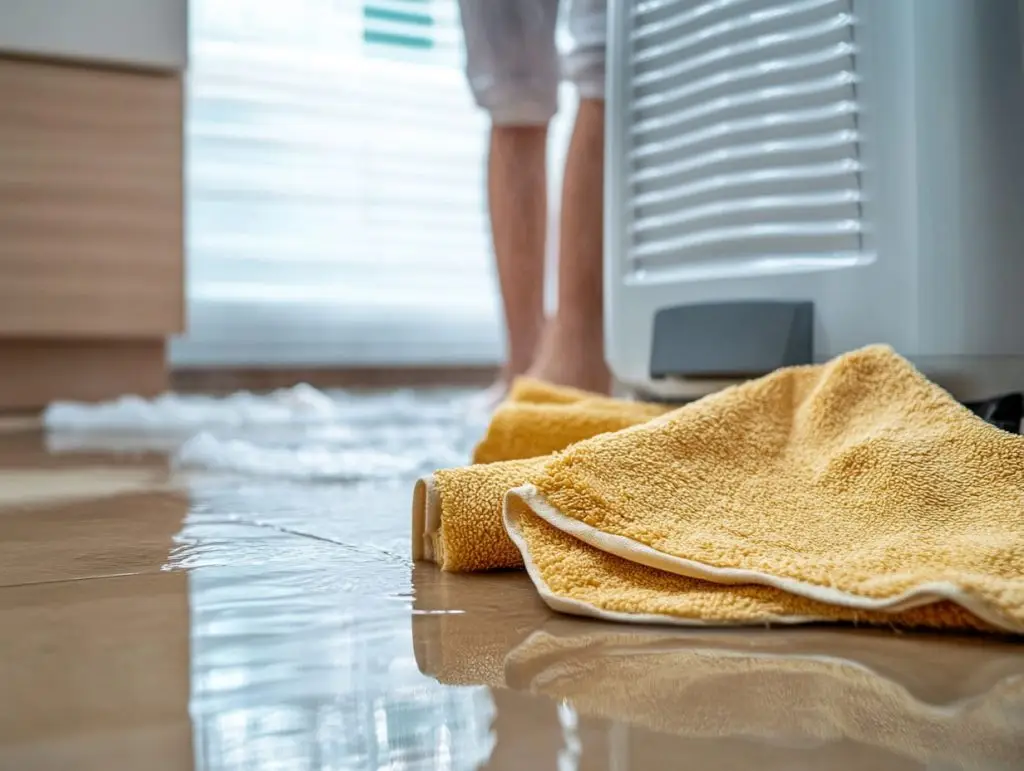by Andrey Zhilin, post-storm cleaning expert
Mistake #1: Wiping Visible Water and Calling It a Day
What Happens:
You dry the tile, open a few windows, maybe run a fan.
It looks clean, so you move on.

The Hidden Risk:
Moisture lingers in baseboards, under cabinets, and inside drywall.
Within 48 hours, mold spores activate — and salt begins to crystalize inside surfaces.
The Right Move:
Use a dehumidifier immediately, even if you don’t see puddles.
Check behind appliances and under sinks. Pull back rugs and dry the subfloor.
Salt-laced moisture is corrosive — it must be extracted, not just dried.
Mistake #2: Letting Airflow Do the Work Alone
What Happens:
You open all the windows, thinking the breeze will help.
The Hidden Risk:
In Florida, post-storm humidity is often over 85%.
That air doesn’t dry your home — it feeds the problem.
The Right Move:
Use closed-loop drying: fans + air conditioning + dehumidifiers.
Control humidity first. Then, and only then, ventilate selectively.
Mistake #3: Ignoring the Walls
What Happens:
You clean floors, wipe countertops, maybe wash curtains.
But you forget the painted walls.
The Hidden Risk:
Salt spray travels farther than you think — clinging to walls, outlets, window frames.
When it dries, it attracts moisture back.
The Right Move:
Wipe down walls with a damp microfiber cloth and diluted vinegar.
Pay special attention to window ledges and corners near exterior walls.
Mistake #4: Assuming Your Home is Safe Because It Didn’t Flood
What Happens:
You think, “No standing water — we’re fine.”
The Hidden Risk:
Wind-driven rain enters through vents, soffits, and door gaps.
Salt fog from the ocean or bay settles invisibly onto surfaces.
The Right Move:
Do a top-down check — attic, HVAC intake, laundry room.
Salt can settle on electronics, cause rust on fixtures, or affect air quality if left untreated.
Mistake #5: Using Bleach on Everything
What Happens:
You reach for bleach as a universal solution.
The Hidden Risk:
Bleach doesn’t remove salt. It doesn’t penetrate porous surfaces. And in unventilated areas, it adds chemical stress to an already compromised space.
The Right Move:
Use enzyme-based or salt-specific cleaners for porous surfaces.
Reserve bleach for targeted, non-porous zones — and only with airflow.
At Sharky, We Go Where Moisture Hides
Storm recovery cleaning isn’t about what you see — it’s about what you don’t.
Our team uses moisture meters, salt-safe cleaning agents, and real post-storm protocols tailored to Florida homes.
Don’t just “dry it out.” Reset the air, the surfaces, and the safety of your home.
Read also: Why Your Beach House Needs Seasonal Pressure Washing


